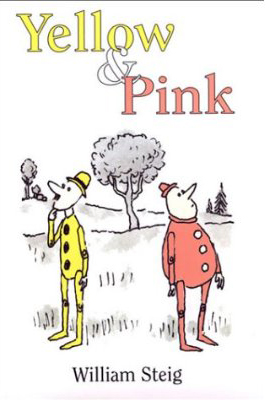
When the New York Times derided this book for children — as possibly giving comfort to religion! — I wanted to buy it right away but of course it was already out of print. So the King County public library system was my best alternative. It’s a very clever yet simple allegory by William Steig, the author of Shrek, contrasting a Darwinian and an intelligent design perspective. A yellow wooden doll and a pink wooden doll debate where they came from, with the yellow doll voicing fatuous opinions straight out of Darwin about how it all came to pass by accident. In the end, a man, their designer, comes along and scoops them both up.
Finally, my turn in the library queue came. After I got home from work with the book, our 7-year-old, Ezra, read it in a few minutes. “Pink seems smarter than Yellow,” he commented. After I had read the brief and charming little book aloud to him, Naomi (age 6) and Hannah (age 3), Naomi said “Again!”
It was a bit over Hannah’s head but then again, the subject also seems to exceed the grasp of the New York Times science reporting staff.
He has nothing to say about the qualities of the book — its cleverness, the quirky personalities of the characters, the simple drawings that somehow capture rich subtlety and emotional detail — or the fact that kids love the book. All we get is the boilerplate identification of science with materialism. “It’s not the pro-religion stance that bothers me here,” he explains, “so much as it is the anti-science one.” Yeah right.
He makes clear that he won’t be reading the book again to his children. Apparently a children’s book that dares to ask the most perennial question in human history is enough to cause metaphysical indignation at the New York Times.

